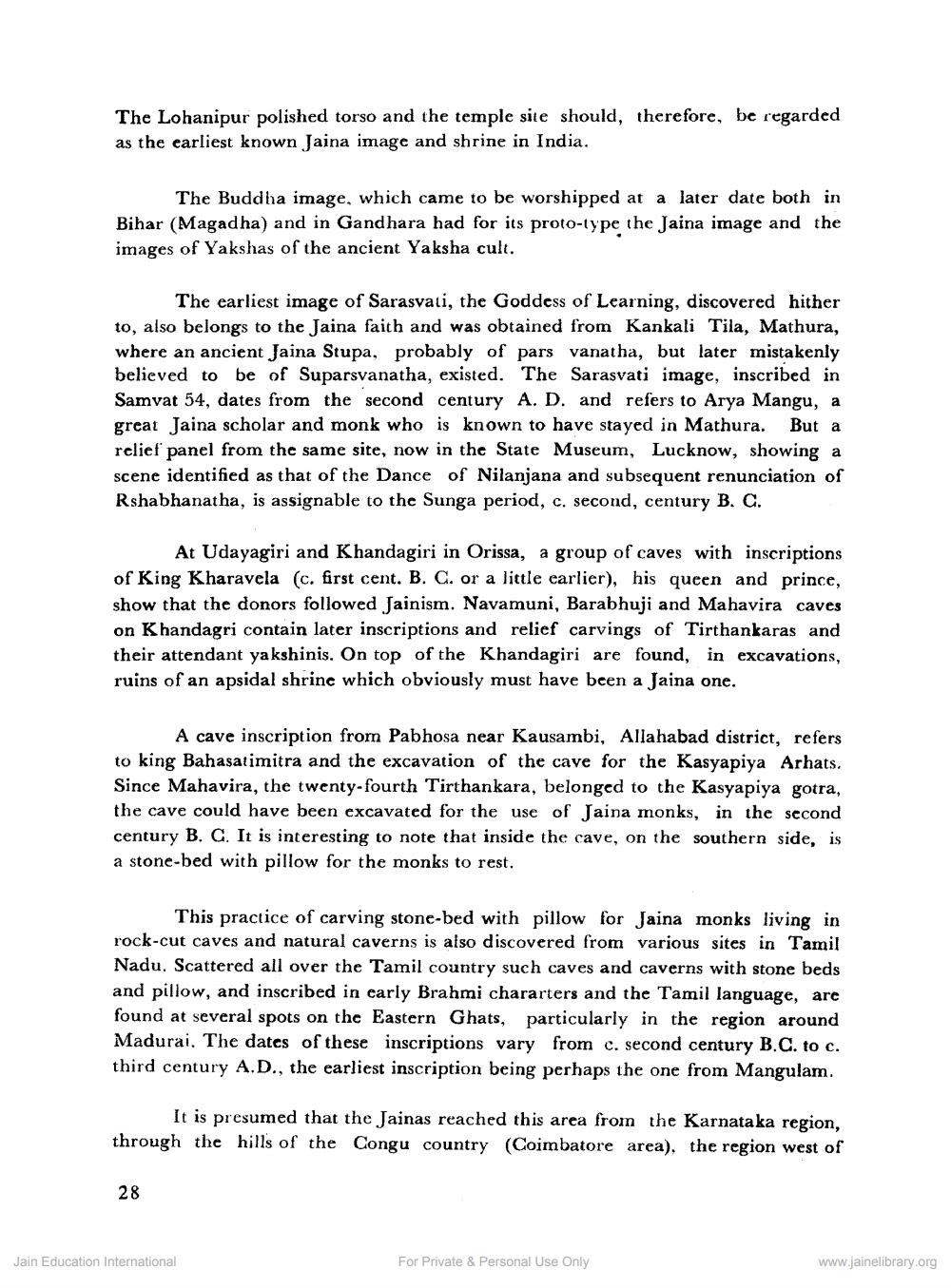________________
The Lohanipur polished torso and the temple site should, therefore, be regarded as the earliest known Jaina image and shrine in India.
The Buddha image, which came to be worshipped at a later date both in Bihar (Magadha) and in Gandhara had for its proto-type the Jaina image and the images of Yakshas of the ancient Yaksha cult.
The earliest image of Sarasvati, the Goddess of Learning, discovered hither to, also belongs to the Jaina faith and was obtained from Kankali Tila, Mathura, where an ancient Jaina Stupa, probably of pars vanatha, but later mistakenly believed to be of Suparsvanatha, existed. The Sarasvati image, inscribed in Samvat 54, dates from the second century A. D. and refers to Arya Mangu, a great Jaina scholar and monk who is known to have stayed in Mathura. But a relief panel from the same site, now in the State Museum, Lucknow, showing a scene identified as that of the Dance of Nilanjana and subsequent renunciation of Rshabhanatha, is assignable to the Sunga period, c. second, century B. C.
At Udayagiri and Khandagiri in Orissa, a group of caves with inscriptions of King Kharavela (c. first cent. B. C. or a little earlier), his queen and prince, show that the donors followed Jainism. Navamuni, Barabhuji and Mahavira caves on Khandagri contain later inscriptions and relief carvings of Tirthankaras and their attendant yakshinis. On top of the Khandagiri are found, in excavations, ruins of an apsidal shrine which obviously must have been a Jaina one.
A cave inscription frorn Pabhosa near Kausambi, Allahabad district, refers to king Bahasatimitra and the excavation of the cave for the Kasyapiya Arhats. Since Mahavira, the twenty-fourth Tirthankara, belonged to the Kasyapiya gotra, the cave could have been excavated for the use of Jaina monks, in the second century B. C. It is interesting to note that inside the cave, on the southern side, is a stone-bed with pillow for the monks to rest.
This practice of carving stone-bed with pillow for Jaina monks living in rock-cut caves and natural caverns is also discovered from various sites in Tamil Nadu. Scattered all over the Tamil country such caves and caverns with stone beds and pillow, and inscribed in early Brahmi chararters and the Tamil language, are found at several spots on the Eastern Ghats, particularly in the region around Madurai. The dates of these inscriptions vary from c. second century B.C. to c. third century A.D., the earliest inscription being perhaps the one from Mangulam.
It is presumed that the Jainas reached this area from the Karnataka region, through the hills of the Congu country (Coimbatore area), the region west of
28
Jain Education International
For Private & Personal Use Only
www.jainelibrary.org




